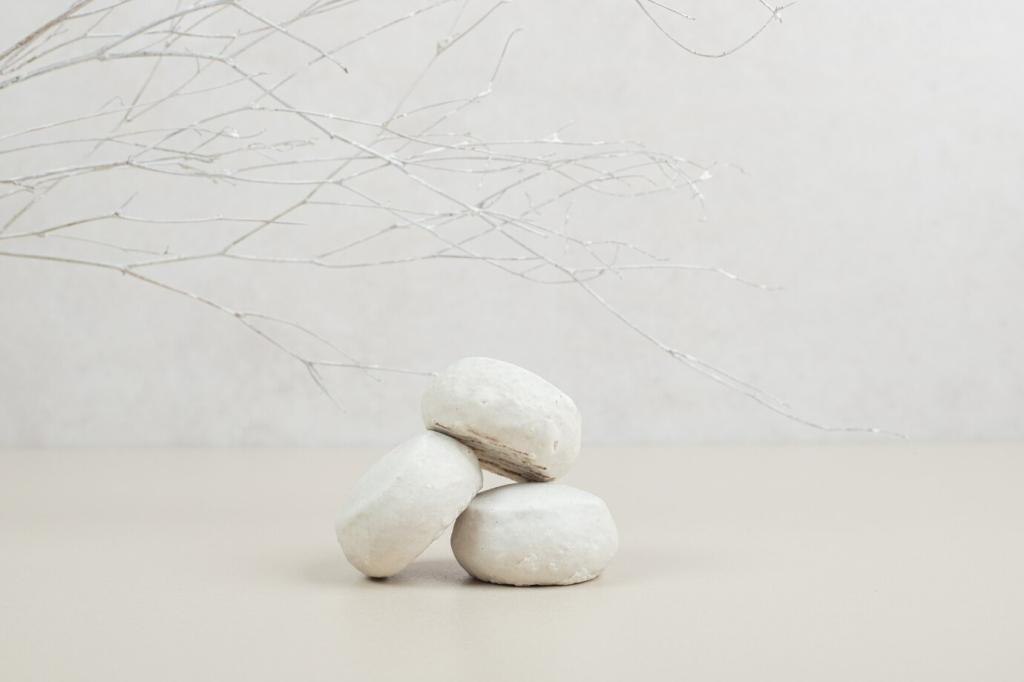Essential Principles of Calming Minimalist Design
Chosen theme: Essential Principles of Calming Minimalist Design. Step into a quieter way of living and creating, where every line has purpose and every pause invites a deep breath. Join the conversation in the comments and subscribe for weekly calm-inspiring prompts.

Why Calm Minimalism Works: Clarity Over Clutter
A Princeton University Neuroscience Institute study showed visual clutter competes for attention, degrading performance and heightening stress. Calm minimalist design trims competing signals, freeing working memory so your prefrontal cortex can prioritize, recover, and sustain focus without constant reorientation.
Why Calm Minimalism Works: Clarity Over Clutter
White space is not emptiness; it is a deliberate pause that frames meaning. Generous margins, measured gaps, and quiet edges give content room to breathe, lowering arousal while guiding the eyes along a gentle, unhurried path.



Space, Grids, and Gentle Rhythm
Grid Systems that Disappear
Use a quiet grid to anchor furniture, art, and storage. When edges align and sightlines stay clean, the grid vanishes into felt order. Your room reads as intentional without showing its underlying blueprint.
Alignment and Breathing Room
Leave consistent margins around rugs, tables, and wall art. Repeating intervals—like an eight-point spacing rhythm—teach the eye what to expect. That predictability reduces decision fatigue and invites deeper, slower attention to what matters.
Flow and One Calm Focal Point
Let circulation be effortless. Keep clear pathways and give each zone one quiet anchor, like a low sofa or centered artwork. With one leader, everything else supports, and the space feels settled without effort.
Typography That Whispers, Not Shouts
Humanist sans-serifs and soft-serif families feel warm yet unobtrusive. Avoid aggressive display fonts. Instead, pick faces with open counters, gentle stroke contrast, and balanced proportions that welcome lingering rather than demanding hurried scanning.
Aim for comfortable line lengths around 45 to 75 characters, with generous line spacing. Ample margins and paragraph breaks create breathing room, turning reading into an unrushed experience instead of an endurance test.
Use size and weight sparingly: one headline size, one subhead, one body. High contrast where needed, muted elsewhere. This restrained system gives every word a place, and the reader a path without noise.



Edit with Purpose: Less, But Better
For every new item, retire one. This simple rule trains discernment and prevents quiet rooms from filling with tomorrow’s clutter. You will notice purchases slow, and gratitude for what remains grows.
Edit with Purpose: Less, But Better
Keep fewer objects, but let each carry meaning. A handmade mug, a photo that steadies you, a single plant. Story-anchored belongings ground a space so it feels lived-in without feeling crowded.
Light as a Calming Companion
Daylight Choreography
Keep window treatments simple to invite soft, even daylight. Position seating to catch indirect light, reducing glare. Daylight offers the purest minimal palette, making colors honest and volumes legible without visual strain.
Warm, Layered Artificial Light
Use multiple low-intensity sources instead of one harsh ceiling light. Warm temperatures around 2700 to 3000 Kelvin calm the nervous system, while dimmers let you dial atmosphere without cluttering the room with extra fixtures.
Evening Wind-Down Rituals
Create a nightly sequence: dim lamps, clear surfaces, cue quiet music. Small rituals anchor calm minimalist design into behavior, reminding your body the day is ending and permission to rest has arrived.
